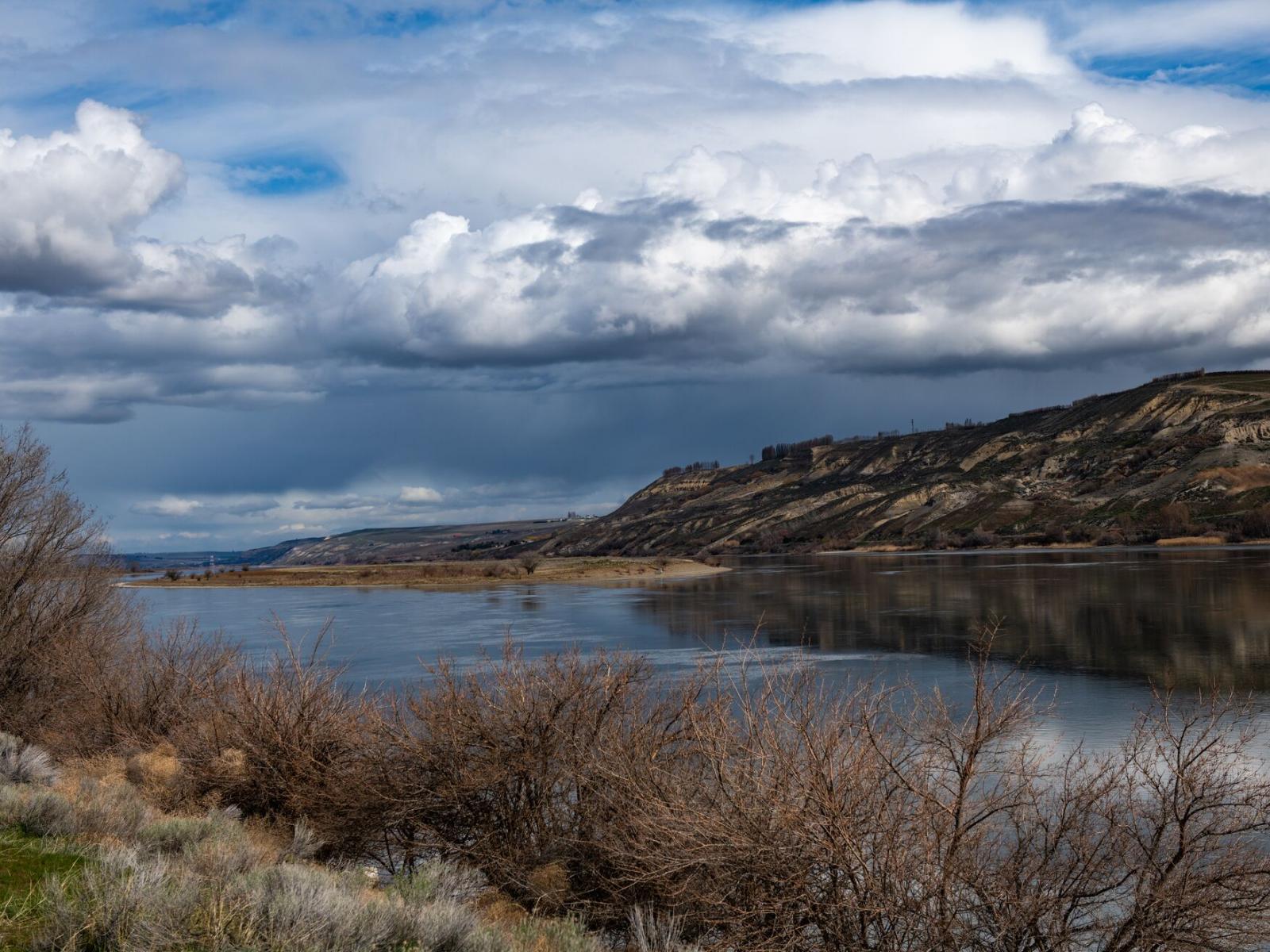Microbial Community Composition and Local Environmental Conditions Contribute to Nutrient Cycling along Riverbanks

The hyporheic zone along riverbanks, where ground water and surface water mix, can contribute up to 90 percent of the emissions of greenhouse gases from a river system.
(Photo by Andrea Starr | Pacific Northwest National Laboratory)
The Science
The hyporheic zone along riverbanks, where ground water and surface water mix, can contribute up to 90 percent of the emissions of greenhouse gases from a river system. Here, nutrients from plants and land runoff mix with microbes that process and transform dissolved organic matter. Abiotic factors, such as sunlight and temperature, also affect this nutrient cycling. A multi-institutional team of scientists performed an in-depth molecular characterization of dissolved organic matter composition in the ground water, river water, and hyporheic zone of a stretch of the Columbia River, and they analyzed these signatures to identify potential mechanisms for dominant biotic and abiotic transformations involved in nutrient cycling.
The Impact
The recognition that river ecosystems contribute to the transport and production of carbon dioxide through the processing of dissolved organic matter is growing; however, these processes are not yet fully represented in Earth system models. The results suggest abiotic factors influencing dissolved organic matter transformations, such as climate variability and land use, could affect light exposure and essential elements in groundwater and river water—this in turn could affect microbial activity in the hyporheic zone in the river. As such, abiotic factors should be included in predictive modeling for understanding watershed dynamics.
Summary
The team sampled the ground water, river water, and the hyporheic zone along a section of the Columbia River watershed. They analyzed the molecules in each sample using high resolution, Fourier transform ion cyclotron resonance mass spectrometry at the Environmental Molecular Sciences Laboratory, a U.S. Department of Energy scientific user facility located at Pacific Northwest National Laboratory. The team assigned compounds to major biochemical classes, such as lipids, hydrocarbons, proteins, and lignin. Finally, they used various statistical and network analyses to identify potential transformation or decomposition pathways in the various sampled locations.
Their results revealed connections between abiotic and biotic transformations. Dissolved matter in river water and groundwater enhanced microbial activity in the hyporheic zone, regardless of river stage, as shown by elevated putative amino acid transformations and the abundance of amino-sugar and protein-like compounds. The groundwater profile revealed high rates of nitrogen and sulfur transformations via abiotic reactions. The river profile showed enhanced abiotic light-enhanced degradation of lignin-like molecules. These molecules then entered the hyporheic zone as more degraded compounds with lower molecular weights.
Contact
Malak Tfaily
University of Arizona
tfaily@arizona.edu
Funding
This research is part of the River Corridor Hydrobiogeochemistry Science Focus Area project at Pacific Northwest National Laboratory sponsored by the U.S. Department of Energy, Office of Science, Environmental System Science (ESS) Program. A portion of the research was performed using the Environmental Molecular Sciences Laboratory, a DOE national scientific user facility located at PNNL. This contribution also originates from the startup program at the University of Arizona.
Published: September 27, 2021
J. D. Fudyma, et al., “Coupled Biotic-Abiotic Processes Control Biogeochemical Cycling of Dissolved Organic Matter in the Columbia River Hyporheic Zone.” Frontiers in Water 2:78 (2021). [DOI: 10.3389/frwa.2020.574692]